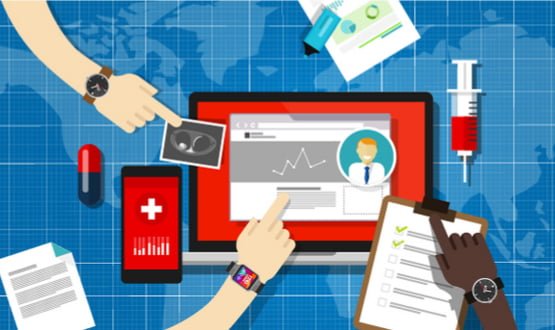The frequently-made promise about electronic patient records (EPRs) is that they will cut the amount of time that clinicians spend making notes – so bolstering the time that can be spent on patient care. But, argues Dmitry Garbar, more needs to be done if this promise is to be fully kept.
In 2016, the Annals of Internal Medicine published a study comparing the amount of time physicians spent entering data onto an electronic patient record (EPR) to the amount of time they spent on direct patient care. The conclusion? For every hour a clinician spends with patients, nearly two are spent on EPR and desk work.
Could this balance be redressed? Could EPRs be improved in such a way to make them quicker and easier to use? Certainly research suggests that poorly designed EPRs can fail to prevent – or even actually lead to – patient harm.
The design and development of EPRs shape how information is entered and displayed. Poorly-designed systems have physicians overloaded with type-and-click tasks and working more outside of clinic hours.
So what role can EPR vendors play in addressing these issues? I’d suggest they could make a few key changes to their software which would make a huge practical difference to usability.
1) Customise EPR interfaces
Healthcare software developers can help to reduce the number of clicks per day by building separate EPR interfaces for separate professionals. The idea is to highlight the health information most likely to be relevant to specific users.
No two healthcare professionals work in the same manner. A therapist requires a different interface than a trauma surgeon based on the needs and disease patterns that they are working with.
A November 2017 study suggested showing less information in physician EPR notes may actually improve productivity. The participants preferred collapsible notices that highlighted sensitive data with coloured text and bold font.
EPR customisation will minimise confusion and enable physicians to quickly get the most relevant clinical information, contributing to a boost in overall efficiency.
2) Minimise data entry
Clerical and administrative tasks – like clinical documentation, order entry, and system security – have been reported to take up about half of the total EPR data entry time.
So one of the potential time-saving solutions is to reduce the amount of input data. For example, exempt clinicians from typing “lbs” or “kg” every time they enter a patient’s weight.
Another option is to add ‘write once, reuse many times’ and embed tags to identify the original source of information. This prevents duplication of patient records when updating existing documentation.
It may also be worth considering whether certain data entry tasks can be delegated from clinicians to administrative colleagues. If this is appropriate, then EPR providers need to ensure appropriate functionality for such staff to quickly and easily use the system.
3) Adopt advanced workflow technologies
Speech recognition technology can be used to dictate notes directly into the EPR, so automating the documentation process. The programme identifies words in a spoken language and converts them into a machine-readable format.
In future, there may also be the potential to integrate natural language processing (NLP) and artificial intelligence (AI) into EPRs by way of virtual assistants.
These virtual assistants would automatically pull up patient health records upon requests, order medication refills, and display specific patient data to clinicians in response to questions.
The technologies free clinicians from doing clerical and type-and-click tasks. Thus, they get more time for their primary duties – helping patients.
That part of my suggestions relate to the introduction of developing technology shows that EPR usability is not a one-off job. Many usability problems only surface after a system has been in routine use.
And as technology and care evolves, the EPR will need to evolve too. Regular software updates are a must, and it’s crucial that in making these vendors start from the needs and reflections of the clinicians who will use the system. According to the research, periodic feedback from end users can allow developers to identify usability issues that may hinder workflows and threaten patient safety.
Making an EPR the best it can be is a journey. If we are to truly make the most of digitisation of records, then vendors will need to continually strive for ways to make their software quicker, easier and more efficient.
Dmitry Garbar is a partner at Belitsoft, a custom software development company with a focus on healthcare. He has been working in IT for over 11 years, first as a developer and since in project management roles.

